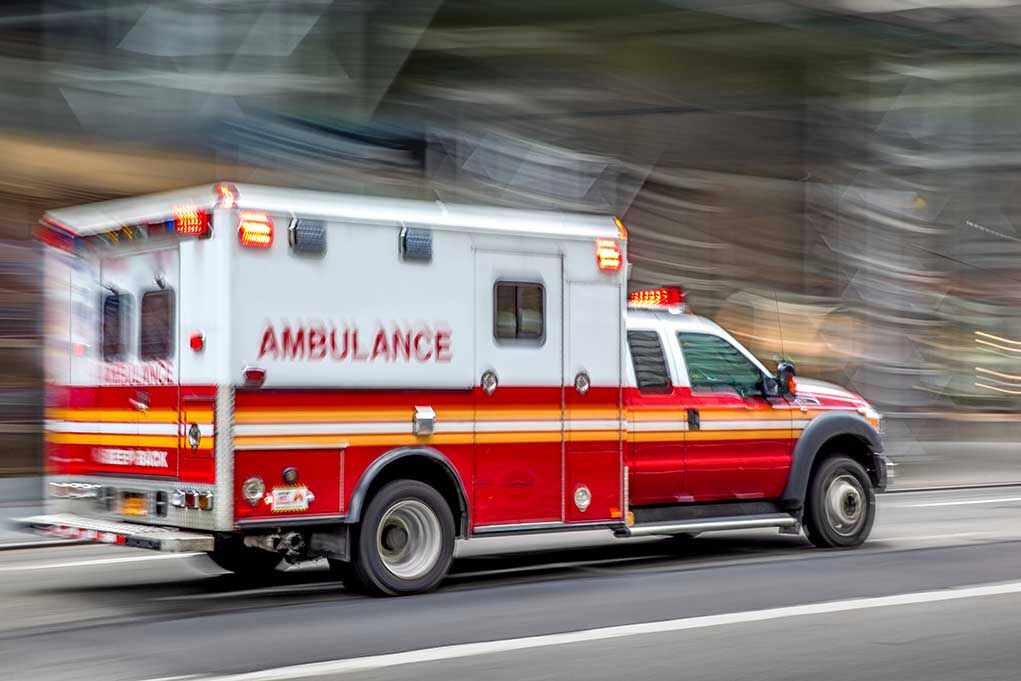
Three lives hung in the balance above rush hour traffic, yet not a single car below was touched—why did a medical helicopter crash land on Sacramento’s busiest freeway with such catastrophic precision?
Story Snapshot
- Medical helicopter crashes onto Highway 50, critically injuring all three crew members and miraculously sparing everyone else.
- No patients were on board, and no post-crash fire occurred, defying typical expectations.
- Rapid intervention by civilians and first responders played a crucial role in the immediate aftermath.
- Federal agencies have launched an investigation, while the community grapples with the implications for air medical safety.
The Anatomy of a Perfect Storm: Timeline and Setting
A REACH Air Medical Services helicopter took off from Red Bluff Municipal Airport, bound for Sacramento. The aircraft, an Airbus H130, completed its medical mission at UC Davis Medical Center and departed again just after 7:00 PM. Within thirty seconds of liftoff, the helicopter lost altitude and crashed onto Highway 50, a central artery slicing through Sacramento. The timing—post-peak commuter hours—meant fewer vehicles than usual, a fact that almost certainly prevented mass casualties. With three crew members on board, the helicopter struck the freeway but did not ignite, a detail that investigators and aviation experts now scrutinize for clues. The rapid closure of Highway 50 and swift scene management by first responders set the tone for a community response that would soon become part of the story’s legacy.
Traffic halted, but the city held its breath as emergency workers and passersby converged to help. The absence of a patient on board and the lack of bystander injuries are statistical anomalies in helicopter crashes, raising immediate questions about fate, preparation, and the mechanics of tragedy. The choice of flight path, timing, and the nature of the mission combined to create a scenario that was as dramatic as it was fortunate for those on the ground. Helicopter crashes in urban settings are rare, and this incident stands out not only for its severity but for what did not happen: a fireball, a pileup, or a cascade of secondary injuries. Instead, the scene was defined by urgency, coordination, and a singular focus—saving the crew.
The Stakeholders: Who Held the Line?
REACH Air Medical Services, the crew members, UC Davis Medical Center, the NTSB, FAA, California Highway Patrol, Sacramento Fire Department, and a handful of good Samaritans each played distinct roles. REACH Air, responsible for the operation and safety of its fleet, now faces scrutiny over the mechanical and procedural integrity of its flights. The three crew members—pilot, nurse, paramedic—are the immediate victims, their conditions critical and their families thrust into uncertainty. UC Davis serves as both the site of departure and the sanctuary for the wounded, while federal agencies undertake the methodical task of investigation. First responders and civilians bridged the gap between calamity and care. Authority, compassion, and expertise converged in real time, shaping an outcome that could have been far worse.
Power dynamics shifted as the NTSB and FAA asserted control over the investigation, demanding answers that could reshape air medical protocols. REACH Air, under regulatory oversight, must balance transparency with reputation management. Local officials, tasked with public communication and safety, praised the rapid and selfless actions of those who responded first. The sequence of decisions—by pilots, dispatchers, and emergency personnel—will be dissected for lessons and accountability.
Unfolding Investigation and Impact: What Happens Next?
As of October 8, 2025, all three crew members remain in critical condition at UC Davis Medical Center. The NTSB and FAA have begun their investigation, securing the wreckage and collecting flight data. No official cause has been determined, and the absence of mechanical warnings prior to takeoff leaves open a wide field for speculation. Statements from REACH Air express concern and a commitment to cooperate, while local leaders highlight the heroism of those who intervened. Highway 50, now reopened, bears the scars of a night when technology faltered and humanity rose.
The short-term effects ripple through the medical transport community: delayed missions, shaken crew morale, and logistical challenges for emergency services. Families of the injured face a new reality, while Sacramento commuters and hospital staff absorb the emotional shock. The economic implications—loss of a vital aircraft, insurance claims, and potential legal actions—are tempered by the broad social impact: renewed awareness of the risks inherent in air medical transport and the value of community response. Long-term, the incident may prompt industry-wide reviews of safety protocols, particularly for takeoff and landing zones near urban areas. Regulatory changes could follow, driven by findings from the ongoing investigation.
Expert Analysis: Aviation Safety Under the Microscope
Aviation safety experts consistently identify takeoff and landing as the most hazardous moments in flight, especially within city limits. The lack of a post-crash fire is unusual and may indicate either fuel system integrity or rapid emergency mitigation. Academic journals and professional commentary on medical transport highlight the need for robust crew training, equipment maintenance, and clear operational protocols. Diverse viewpoints emerge: some call for stricter regulations and crash-resistant technologies, others defend the overall safety record of air medical services. The facts, as reported by KCRA and CBS Sacramento, align closely with video evidence and official statements, offering little room for contradiction but much for reflection.
As Sacramento recovers and investigators pore over data, one truth remains: the intersection of technology, timing, and human response can turn potential catastrophe into a story of resilience. The crash on Highway 50 will not only inform future safety measures but also serve as a sobering reminder of the thin margin between routine service and disaster. For those who witnessed the event, and for those whose lives were changed, the lessons are immediate and enduring.
Sources:
Highway 50 helicopter crash highlights perils medical crews face in the skies













